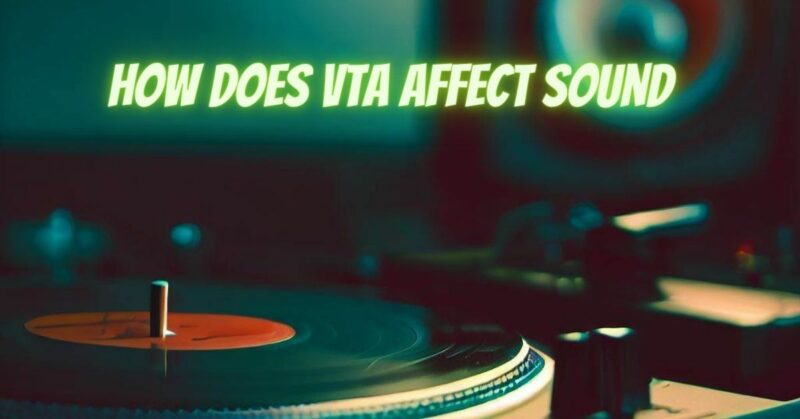In the realm of vinyl playback, every minute detail contributes to the symphony of sound that graces our ears. Among these factors, the Vertical Tracking Angle (VTA) plays a crucial role in shaping the sonic landscape. Understanding how VTA affects sound quality is essential for audiophiles and vinyl enthusiasts seeking to unlock the full potential of their audio systems. In this article, we will explore the intricate relationship between VTA and sound reproduction, shedding light on its influence on tonal balance, imaging, and overall musical experience.
The Dynamics of VTA
VTA, or the angle at which the tonearm meets the record’s grooves, is a critical factor in determining how the stylus tracks the vinyl surface. A well-aligned VTA ensures that the stylus sits perpendicular to the groove walls, minimizing distortion and maximizing sound fidelity.
Impact on Sound Quality:
- Tonal Balance: VTA significantly influences the tonal balance of the audio playback. Improper VTA can lead to imbalanced frequency response, where certain frequencies are exaggerated or attenuated, altering the overall tonality of the music.
- High-Frequency Clarity: Accurate VTA alignment enhances the reproduction of high-frequency details. Correct tracking minimizes sibilance and distortion in the upper frequencies, resulting in cleaner and more transparent sound.
- Bass Response: VTA affects the presentation of bass frequencies. Incorrect VTA can lead to bloated or boomy bass, while proper alignment ensures tight and controlled low-frequency reproduction.
- Imaging and Soundstage: Correct VTA contributes to a well-defined soundstage and accurate imaging. It allows instruments and voices to be precisely positioned within the stereo image, creating a three-dimensional sonic environment.
Fine-Tuning for Optimal Sound:
- Experimentation: Achieving the perfect VTA involves experimentation and careful listening. Make incremental adjustments to the VTA setting and observe the impact on sound quality.
- Reference Tracks: Use reference tracks with a variety of musical elements to assess how VTA changes affect different aspects of sound reproduction, such as vocals, instruments, and ambience.
- Listening Sessions: Conduct dedicated listening sessions with critical listening in mind. Pay attention to tonal balance, detail retrieval, imaging, and any signs of distortion or sibilance.
Synergy with Cartridges and Tonearms:
- Cartridge Compatibility: Different cartridges have varying stylus profiles and suspension characteristics. Ensuring the VTA aligns with your specific cartridge’s design can optimize performance.
- Tonearm Considerations: The tonearm’s geometry and effective length impact the ideal VTA setting. Consider how these factors interact with your chosen cartridge to achieve optimal alignment.
A Harmonious Sonic Canvas
VTA adjustment is akin to adjusting the lens of a camera to capture a scene in perfect focus. By meticulously aligning the stylus angle, audiophiles create a canvas on which the music unfolds with unparalleled clarity, nuance, and emotion.
The Vertical Tracking Angle (VTA) is a conductor that orchestrates the symphony of sound in vinyl playback. Its influence on tonal balance, imaging, and overall musical experience is profound. Audiophiles who strive for sonic excellence recognize VTA as a vital parameter in shaping their listening journey. Through careful experimentation, reference listening, and a deep understanding of cartridge and tonearm interactions, enthusiasts can unlock a realm of audio perfection where every note, every instrument, and every emotion is rendered with breathtaking fidelity. VTA alignment isn’t just a technical aspect; it’s a sonic artistry that transforms vinyl records into portals of musical magic.

